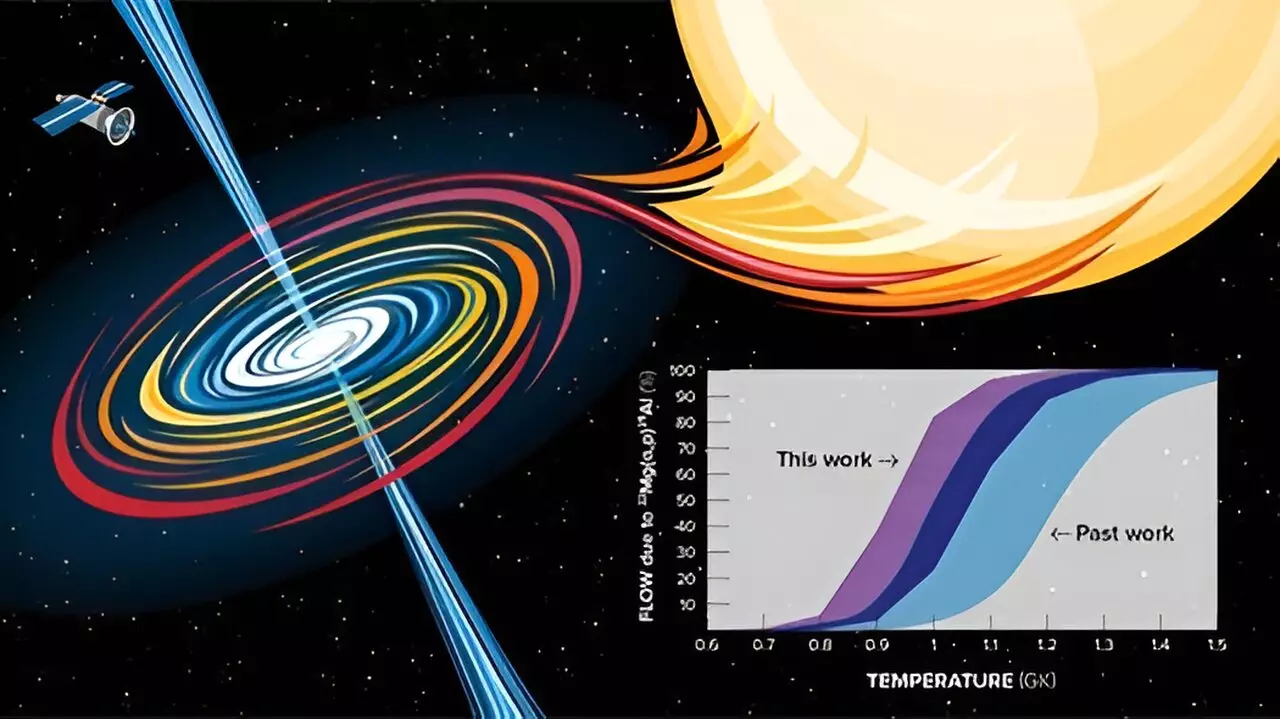X-ray bursts (XRBs) are powerful explosions that occur on the surface of a neutron star when it absorbs material from a companion star. These bursts are the result of increasing temperatures and densities on the surface of the neutron star, which trigger a series of thermonuclear reactions. These reactions lead to the creation of heavy chemical elements, providing valuable insights into the processes that power XRBs.
A recent study published in Physical Review Letters explores the importance of the 22Mg(α,p)25Al reaction in XRBs. This reaction involves magnesium-22 and helium-4, producing a proton and aluminum-25. The discovery that the rate of this reaction is four times higher than previously measured has significant implications for our understanding of XRBs. It plays a crucial role in informing models of these explosions and shedding light on the reaction mechanisms that drive them.
Research has shown that XRBs rely on a sequence of reactions involving unstable nuclei that quickly capture protons before they decay. However, the rate of specific proton capture reactions decreases at certain “waiting point” nuclei, like magnesium-22, causing a slowdown in the nuclear flow. By studying reactions involving the capture of alpha particles by these nuclei, scientists can bypass these waiting points and continue the synthesis of heavier elements, enhancing our knowledge of XRBs.
To measure the 22Mg(α,p)25Al reaction, researchers utilized inverse kinematics at the Argonne Tandem Linac Accelerator System (ATLAS). They developed an in-flight radioactive beam and directed it to the MUlti-Sampling Ionization Chamber (MUSIC) detector filled with pure helium gas to replicate conditions relevant to XRBs. This experiment produced a new direct measurement of the reaction’s cross-section, revealing a higher probability of the reaction occurring than previously believed.
The results of the experiment not only highlight the importance of the 22Mg(α,p)25Al reaction in XRBs but also provide valuable insights into the underlying physics of nucleosynthesis reactions at the magnesium-22 waiting point. The higher rate of the reaction suggests a greater likelihood of bypassing the waiting point, while the discovery that the reaction initiates at lower temperatures than expected challenges existing models of XRBs. Overall, this research contributes to a deeper understanding of the processes that drive XRBs and the synthesis of heavy elements in the universe.


Leave a Reply
You must be logged in to post a comment.